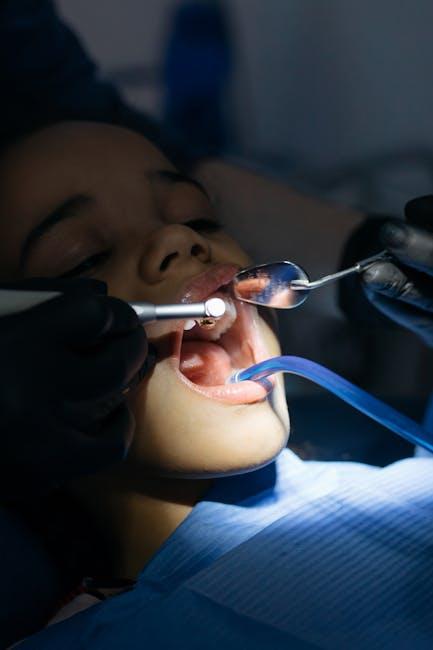1 in 3 Kids Has Dental Problems, Poll Finds – U.S. News & World Report
Recent findings from a national poll conducted and reported by U.S. News & World Report reveal a concerning trend in children’s oral health: 1 in 3 kids suffers from dental problems. This alarming statistic sheds light on the widespread nature of dental issues among children in the United States, underscoring the need for increased awareness around pediatric oral care. In this article, we’ll explore the key data from the poll, examine common dental conditions affecting kids, discuss the root causes, and provide actionable steps parents can take to protect and improve their children’s smiles.
Understanding the Poll Results: What Do They Reveal?
The poll surveyed a representative sample of parents across the U.S., asking about their children’s dental health status over the past year. The findings showed that approximately 33% of children experienced some form of dental problem, which ranges from cavities to gum diseases.
These problems mostly include:
- Tooth decay (cavities)
- Gum inflammation or gingivitis
- Enamel defects
- Pain or sensitivity in teeth
- Other oral health concerns like bad breath or injuries
Why Are Childhood Dental Problems So Common?
There are several reasons why dental problems remain prevalent among kids in the U.S.:
- Dietary Habits: High consumption of sugary snacks, sodas, and processed foods fuels the growth of decay-causing bacteria.
- Inadequate Oral Hygiene: Lack of proper brushing and flossing techniques often leads to plaque buildup and cavities.
- Limited Dental Visits: Regular dental check-ups are critical but many children do not see a dentist promptly due to fear, cost, or lack of awareness.
- Socioeconomic Factors: Families with lower income or limited access to dental insurance report higher incidences of untreated dental problems.
- Fluoride Deficiency: Insufficient fluoride exposure can reduce natural enamel protection, increasing vulnerability to cavities.
Common Childhood Dental Problems: A Quick Overview
| Dental Problem | Symptoms | Typical Causes | Treatment Options |
|---|---|---|---|
| Tooth Decay (Cavities) | Toothache, visible pits, discoloration | Poor diet, plaque buildup, inadequate brushing | Fillings, sealants, fluoride treatments |
| Gingivitis | Red, swollen gums, bleeding during brushing | Poor oral hygiene, plaque accumulation | Improved hygiene, professional cleaning |
| Enamel Defects | White or brown spots, rough enamel | Nutritional deficiencies, fluoride issues | Dental sealants, remineralization therapy |
| Tooth Sensitivity | Sharp pain to hot, cold, or sweet stimuli | Worn enamel, cavities, gum recession | Desensitizing toothpaste, dental restorations |
The Importance of Early Prevention and Regular Dental Care
Early prevention is critical in reducing dental problems among children. Consistent oral hygiene practices coupled with regular professional dental visits can dramatically decrease the risk of dental diseases. Here are key preventive steps parents should prioritize:
- Begin cleaning your child’s gums even before teeth emerge, and brush their teeth twice daily as soon as they appear.
- Limit sugary foods and drinks; encourage healthy snacks like fruits and vegetables.
- Schedule routine dental check-ups starting by your child’s first birthday or within six months of the first tooth erupting.
- Use fluoride toothpaste appropriate for your child’s age to strengthen enamel.
- Teach and supervise proper brushing and flossing techniques.
Benefits of Maintaining Good Oral Health in Children
Investing in children’s dental care yields significant benefits beyond just a beautiful smile:
- Improved overall health: Oral infections can impact general health and immunity.
- Enhanced self-confidence: Healthy teeth foster positive self-image and social interactions.
- Better academic performance: Pain-free teeth reduce school absences and improve concentration.
- Lower healthcare costs: Prevention saves money compared to treating advanced dental diseases.
Practical Tips for Parents to Tackle Childhood Dental Problems
Facing the reality that 1 in 3 kids has dental problems can feel overwhelming, but parents can take practical, manageable steps to protect their children’s oral health:
- Set a daily oral care routine: Incorporate toothbrushing into morning and bedtime rituals.
- Lead by example: Children mimic parents; demonstrate good dental habits consistently.
- Choose the right dental products: Use fluoride toothpaste and soft-bristled brushes designed for children’s teeth.
- Limit sugary beverages: Replace soda and juice with water or milk to reduce sugar exposure.
- Regular dental visits: Arrange semi-annual visits and follow dentist recommendations for cleanings and sealants.
- Discuss oral health at school: Coordinate with teachers or caregivers for consistent dental hygiene promotion.
Case Study: How Early Dental Intervention Changed a Child’s Life
Consider the story of Emily, a 7-year-old whose mother noticed difficulty eating and frequent complaints of tooth pain. A timely dental visit revealed multiple cavities caused by excessive sugary drink consumption and inconsistent brushing. After treatment and guidance, Emily’s oral health significantly improved, and she has since maintained a steady brushing routine and regular dental checkups. Her story illustrates how early awareness and dental care can prevent long-lasting issues and discomfort.
Firsthand Experience: Pediatric Dentist’s Advice
Dr. Sarah Thompson, a pediatric dentist with over 15 years of experience, emphasizes, “Parents are the first line of defense in their children’s oral health. Starting good habits early, monitoring diet, and ensuring routine dental visits can make a world of difference. Ignoring early signs of dental problems often leads to painful, costly treatments later. Don’t wait for symptoms; prevention is key.”
Conclusion
The recent poll revealing that 1 in 3 kids in the U.S. faces dental problems serves as a wake-up call for parents, caregivers, and health professionals alike. Childhood oral health impacts much more than teeth — it affects a child’s well-being, confidence, and development. By staying informed, adopting preventative practices, and seeking timely professional care, families can drastically reduce the prevalence of dental issues and pave the way for a lifetime of healthy smiles.
Remember, good dental health for kids starts at home but thrives with ongoing community awareness and access to quality dental care. Let’s work together to change the statistic and ensure every child grows up with a bright, healthy smile.


